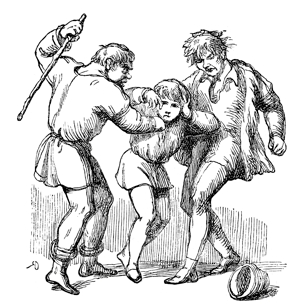People
 Quality Learning is a different way of working with people with a focus on motivation, relationships and leadership.
Quality Learning is a different way of working with people with a focus on motivation, relationships and leadership.
Motivation
The Quality Learning approach draws on the work of Douglas McGregor with his Theory X and Theory Y view of human motivation.
Theory X is based on the assumptions that people are lazy, lack ambition, and avoid work and responsibility if they can. Because of this dislike of work, we need to be coerced, controlled, directed, punished and rewarded to perform. This management method is based upon extrinsic motivation.
Theory Y assumes that purposeful effort applied to work is as natural as play or rest. People will contribute to achieving objectives they are committed to and the reward lies in achievement. People can, and want to learn. They are creative, innovative, ingenious and imaginative. It is the systems and processes associated with learning and work that can de-motivate, or stifle this potential.
We must, therefore, find ways to tap into this intrinsic motivation. We can do this by working with our people to design and continually improve systems and processes. By identifying and eliminating the barriers to productivity and performance.
Exhortations, rewards, blame and punishments
do nothing to improve the system.
They only upset people, interfere with relationships
and make things worse!
Learn more about intrinsic motivation by watching this video by Daniel Pink.
Many of the improvement tools enhance intrinsic motivation. The tools foster collaboration and promote trust, belonging and a culture of feedback. Others help with clarification of purpose to align effort and provide the opportunity for input, ownership and choice.
The Capacity Matrix is an example of an improvement tool that enhances intrinsic motivation. The Capacity Matrix enables learners to take responsibility for their learning by making the learning explicit and visible. Learners use the matrix to plan their learning and track progress over time. When we feel ‘in control’ and can ‘see success’ our motivation is high.
Relationships
People relate to one another continually within social systems. These relationships have a profound effect on how the system behaves and performs.
There are two major influences that determine the quality of the relationships in our organisations.
One is individual choice; the other lies in the design of systems and processes
We can learn how to exercise individual choice to positively influence our personal impact on relationships.
Bad systems and processes are toxic to relationships. Poorly defined, ineffective or misunderstood systems and processes lead to confusion and frustration.
Quality Learning helps us to improve relationships by changing conversations, building trust, and working together to improve systems and processes.
Download a Decision and Action Record template to improve meetings.
Leadership
Continual improvement requires a relentless focus
upon the improvement of processes and relationships
This calls for leaders, managers and workers to collaborate; to work together, engaging in productive conversations, to improve processes and relationships.
The Quality Learning philosophy provides a proven and robust theory that gives confidence to leaders, managers and ‘workers’ that their efforts towards continual improvement will be effective and valued by others.
The Quality Learning principles provide a compassionate and insightful lens through which to view the world. They encapsulate a guide to more effective action than the prevailing system of management. Once understood, they provide a proven and more productive way of thinking and leading.
What leadership model do you use to guide the way you lead improvement? How does it differ from the Quality Learning approach?
